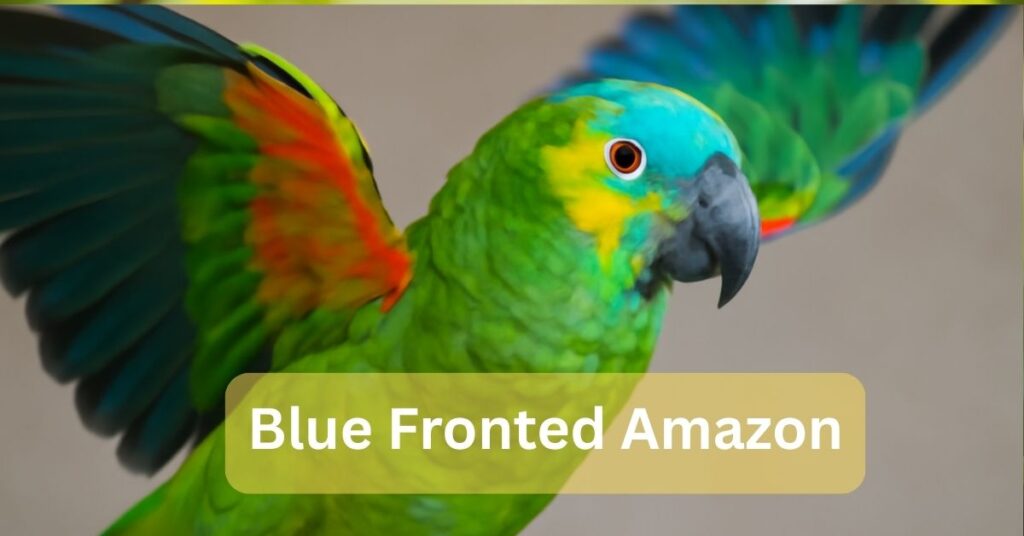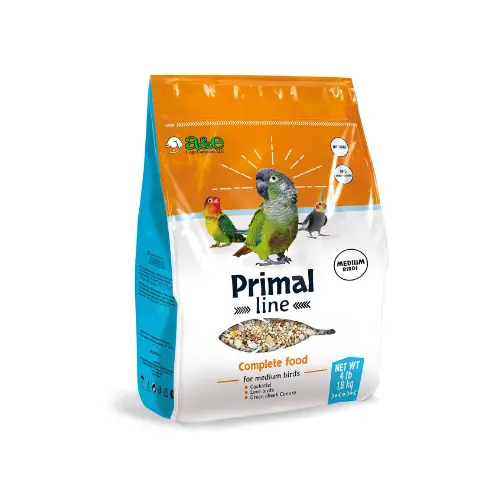

Blue Fronted Amazon Parrot Guide
Ever wondered about that vibrant blue fronted amazon with the splash of blue that turns heads? Blue Fronted amazons have a way of stealing the show without even trying. As an amazon parrot, this feathered friend packs personality into a compact frame. Break it down simply, from their roots to real life tips. you are a first timer or a seasoned bird lover there of something here to spark your interest. These parrots are not just pets they are conversation starters with wings.
What Is a Blue Fronted Amazon?
Blue Fronted amazons stand out as one of those birds that catch your eye right away. People often call them by their common name, which ties back to that splash of color on their heads. This amazon parrot belongs to the Amazona aestiva species first described by Carl Linnaeus back in 1758. Folks in places like northern Argentina Paraguay and Bolivia know them well from the wild.
They make great companions for bird lovers who want a smart talker in the family. As a bird species, these parrots thrive in aviculture settings too. Just picture a lively avian friend that mimics human speech with ease. Breeders love working with them because of their bright green plumage and those blue feathers up front. If you’re thinking about adding one to your home knowing these basics helps a lot.
Bird Species Basics
Blue Fronted amazons fit right into the parrot family as a classic south american choice. Their scientific name Amazona aestiva covers the turquoise fronted amazon variety too. These amazons live in woodlands and savannas, munching on leaf buds and fruits.
In the wild, they nest in tree cavities, which keeps them safe from predators. Avian experts note how highly intelligent they are, often forming strong bonds with owners. From Argentina to Bolivia, populations face some pressure from the pet trade but captive breeding helps. Owners find them engaging because they mimic sounds like pros among mimics in the parrot world.
Common Name and Classification
That common name Blue Fronted amazon, comes from the blue on the head that sets them apart from other amazons. Classification puts them under the Psittacidae family, with the xanthopteryx mutation adding extra yellow on the head for some birds.
Carl Linnaeus gave them their official spot in 1758, linking them to similar species like the blue and yellow macaw in looks. In aviculture, people group them as medium sized parrots perfect for homes. Their beak and yellow markings make identification easyeven in a flock. Wild ones from Paraguay show that bright green body with red patches on the wings.
Physical Traits of Blue Fronted Amazons
When you see a Blue Fronted amazon up close, the plumage grabs attention first. Bright green covers most of the body, with blue feathers crowning the forehead and a bit of yellow on the head for that signature look. Red patches pop on the wings giving them a festive vibe. As for size, these parrots measure about 14 to 15 inches from beak to tail weighing in at 14 to 16 ounces.
That makes them sturdy without being too bulky for indoor spaces. Lifespan stretches to 50 years or more with good care, so they’re in it for the long haul. The beak stays strong for cracking nuts, a nod to their wild roots in south american forests. Feathers stay vibrant if you keep dust away during grooming. Overall their coloration screams personality, blending bold hues that never fade into boring.
Plumage Details
Plumage on Blue Fronted amazons mixes green dominance with pops of color elsewhere. Blue feathers frame the face while yellow on the head varies by individual or mutation. Wings hide those red patches until they spread out in flight. Tail feathers match the green body keeping things cohesive. In sunlight the sheen makes them look almost metallic. Owners notice how soft the feathers feel perfect for preening sessions. Compared to feral groups in places like Stuttgart wild ones hold that fresh look longer thanks to natural diets.
Size, Weight, and Lifespan
Size wise, Blue Fronted amazons hit a sweet spot at around 15 inches long. Weight hovers near 15 ounces, balanced for perching on fingers without strain. Lifespan pushes past 50 years easily, sometimes reaching 80 with top notch vet care. That means planning for decades of chirps and chats. Growth to sexual maturity happens around 4 to 5 years, when colors deepen. Breeders track these stats closely in aviaries to match pairs well. In captivity, a healthy diet keeps them at peak weight avoiding issues down the line.
Origin and Natural Habitat
Blue Fronted amazons hail from south american spots like northern Argentina and Paraguay. Bolivia shares in their range too, where woodlands and savannas serve as home base. They flock in groups, foraging for seeds and fruits amid the trees. Tree cavities become nests, high up to dodge ground threats.
Screamer calls echo through the canopy as they bond with flockmates. Evidence of a population decline shows up on the IUCN Red List of Threatened Species since 1981 when it was listed under CITES Appendix II. Heavily traded for the pet market, wild caught numbers dropped, pushing more toward captive sources. Savanna edges suit them, with plenty of spots for hours at a time spent climbing and calling.
Behavior and Personality
Behavior in Blue Fronted amazons mixes playfulness with a touch of sass. They bond tight with people, craving time to spend together daily. As highly intelligent birds, they solve puzzles and love activities around the house. Flockmates in the wild teach them to mimic everything from human speech to household noises.
Personality shines as outgoing, though they can get loud if bored. Giving your bird outside the cage time on a portable play stand cuts down on mischief. Close quarters like apartment buildings work if you plan for noise. They thrive on routine perking up for meals or play. Watch how they strut with that beak and yellow flash it shows confidence. Overall, expect a feisty friend who demands attention but repays it with endless entertainment.
Speech Abilities
Speech abilities make Blue Fronted amazons stars among talkers. They pick up words fast, mimicking human speech with clear tones after just a few repeats. Some owners hear full phrases after months of practice. That Blue Fronted amazon parrot knack for sounds comes from wild calls adapted to home life.
Not every one becomes a chatterbox, but most try. Practice in short sessions builds their vocab without stress. Compared to other amazons, they rank high for clarity, turning heads at gatherings. Just keep it fun, and you’ll have a bird like a Blue Fronted amazon chatting back before you know it.
Benefits of Owning a Blue Fronted Amazon Parrot
Blue Fronted amazon parrots slide right into life as upbeat sidekicks that lift moods without much fuss. Here’s what stands out when one joins your crew:
- Smart Tricks and Chats: Their highly intelligent brains pick up commands fast, turning fetch or waves into shared laughs. Expect a talker who echoes your words back during coffee breaks.
- Daily Fun Boost: Antics like tossing toys or head bobs spark giggles, breaking up work slumps with pure play.
- Family Glue: Kids and adults bond over feed times or cuddle spots, pulling the group closer around that beak and yellow flash.
- Solo Comfort: Quiet evenings fill with soft whistles or perch hops, easing alone time into cozy chats.
- Eye Candy Perks: Plumage catches sunlight in greens and blues, while mimics in the parrot world add soundtrack surprises.
- Health Nudges: Walks to the aviary or grooming rounds get you moving, sneaking in fresh air without trying.
How to Care for Your Blue Fronted Amazon
Caring for your Blue Fronted amazon starts with basics that keep them happy and healthy. Set up a routine around feeding, play, and rest to match their natural rhythms. Watch for signs of stress, like feather plucking, and adjust quickly. Social time matters most spend at least an hour daily interacting to build trust. Vet visits twice a year catch issues early, especially with their long lifespan in mind. Toys rotate weekly to spark curiosity, preventing boredom in that active mind. Diet tweaks based on age keep energy steady. Overall, patience pays off as they open up.
Cage Setup
Cage setup needs thought for a Blue Fronted amazon’s comfort. Aim for at least 30 by 36 by 48 inches to allow wing stretches. Bar spacing around half an inch keeps them safe from escapes. Place perches at different heights, including natural wood ones for foot health. Line the bottom with paper for easy cleanups. Position the cage near family action but away from drafts or direct sun. Add a swing and ladder for climbing fun. This space becomes their safe hub, mimicking woodland perches back home.
PRV Cage 1818
$69.95King Cages SLT 102 Small Parrot Open Square
18100 CAGE LINERS
$14.95Daily Diet
Daily diet for a Blue Fronted amazon mixes variety to stay balanced. Start with high quality pellets as the base, about 70 percent of meals. Toss in fresh veggies like carrots or greens for crunch. Fruits such as apples add sweetness, but skip avocado it’s toxic. Quality seed mix sprinkles in sparingly to avoid weight gain. People foods like cooked rice work occasionally, chopped small. Water stays fresh daily, maybe with a vitamin drop weekly. Portion control matters; overfeeding leads to picky eaters. Watch how they devour leaf buds from the wild, and replicate that freshness at home.
Health Checkups
Health checkups keep your Blue Fronted amazon thriving long term. Schedule with a veterinarian who knows avian care every six months. Bloodwork spots issues like feather problems early. Weigh them monthly to track steady growth. Eye and beak checks during visits catch wear from toys. Vaccinations aren’t routine, but parasite screens are. At home, observe droppings for color changes. Early action on anything off means fewer worries down the road.
Play and Activity Needs
Play and activity needs fill a Blue Fronted amazon’s day with purpose. Scatter plenty of toys like bells or shredders to mimic foraging. Rotate them to keep interest high. Outside the cage, a play gym lets them explore safely. Sessions of 20 minutes twice daily build skills. Puzzle feeders challenge that smart beak, rewarding with treats. Group them with flockmates if possible, or just you for bonding. Exercise area setups encourage flapping and climbing, burning energy from savanna roots.
Social Interaction Tips
Blue-fronted amazon social interaction tips weave them into your daily rhythm smoothly. Here’s how to build that flock feel:
- Soft Talks During Holds: Whisper while petting to grow trust bit by bit keeps nerves low.
- Treat Hand-Feeds: Drop nuts straight from your fingers to tighten bonds quick and easy.
- No Jolt Moves: Skip fast grabs that spook; slow steps match their pace.
- Meal Chat Ins: Perch them near dinner talks to join the buzz without the plate.
- Click Train Wins: Reward good hops or words with snaps for sharper smarts.
- Night Covers for Noise: In apartment close quarters, drape the cage to quiet echoes after dark.
Potential Health Concerns
Potential health concerns with Blue Fronted amazons pop up if care slips. Feather plucking signals stress or poor diet, often from boredom. Beak overgrowth happens without enough chew toys, needing a trim. Respiratory issues stem from dusty cages, so clean weekly. Obesity creeps in from too many seeds, leading to fatty liver. Watch for signs like lethargy or odd poops during checkups. Wild caught ones carry parasites more, so quarantine new birds. Vet advice on supplements prevents deficiencies. Most problems fix easy with quick notice, keeping that 50 year span vibrant.
Aviculture Practices
Aviculture practices for Blue Fronted amazons focus on happy, ethical breeding. Breeders pair birds at sexual maturity, around 4 years, in spacious aviaries. Nests mimic tree cavities with soft bedding. Eggs incubate at 99 degrees for 26 days. Hand feeding chicks builds tame pets from day one.
Monitor pairs for aggression during mating season. Release programs help against population decline, though pet trade pulls many in. CITES rules track heavily traded ones to curb illegal trade. Healthy setups include UV lights for feather health. Success shows in strong, colorful offspring ready for homes.
Illegal Trade Risks
Illegal trade risks shadow Blue Fronted amazons despite protections. Wild caught birds suffer stress in transit, arriving weak or sick. CITES Appendix II aims to regulate, but black market slips through. From 1981 when it was listed on the IUCN Red List of Threatened Species, numbers dipped from habitat loss too. Buyers risk fines or unhealthy birds without papers. Opt for breeder raised to dodge these pitfalls. Evidence of a population decline in northern Argentina highlights the toll. Supporting legal channels keeps the species around for future fans.
Why Choose Dallas Parrots for Blue Fronted Amazons
Dallas Parrots stands out when picking a Blue Fronted amazon. Their hand raised birds arrive socialized and healthy, straight from experienced care. You get full health records, easing that first week worry. Options range from young chicks to proven talkers, fitting any home setup. Staff shares tips on cage size and daily routines, like pros. Plus, they stock pellet blends and toys tailored for amazons. Shipping handles smooth, with live arrival guarantees. Folks rave about the personal touch no cookie cutter sales here. If aviculture sparks your interest, their breeder connections open doors. Choosing them means a feathered friend primed for fun, not fixes.
Pricing and Options at Dallas Parrots
Pricing and options at Dallas Parrots keep things straightforward for Blue Fronted amazons. Depending on age and color mutations like yellow on the head. Bundles include starter kits with cage basics and seed mix for new owners. Finance plans spread costs over months. Specials pop up for turquoise fronted amazon variants. Compare that to wild caught risks here, quality shines without the gamble. Add ons like training perches run extra. Transparent quotes mean no surprises at checkout.
Shipping, Returns, and Support
Shipping, returns, and support from Dallas Parrots cover your bases fully. Birds travel in heated boxes with oxygen, arriving next day. Track every step online for peace. Returns accept within 7 days if health issues show, full refund minus shipping. Support lines open daily for setup questions or diet tweaks. Warranty on health lasts 30 days, including vet checks. They even guide on acclimating your new amazon parrot to the flock. Hassle free policies make the jump from site to home seamless.
Comparisons to Other Amazon Parrots
| Feature | Blue Fronted Amazon | Double Yellow Headed Amazon | Yellow Naped Amazon |
| Size | 15 inches | 16 inches | 15 inches |
| Speech | Excellent mimic | Good, but louder | Top tier talker |
| Temperament | Playful, social | Bold, demanding | Affectionate, vocal |
| Plumage | Blue head, green body | Yellow head, green body | Yellow nape, green body |
Blue Fronted amazons edge out in affordability and ease for beginners. Double yellow headeds pack more volume, suiting big spaces. Yellow napeds win on vocab but need extra time. Pick based on your vibe ours balance fun without overwhelming.
Best Situations for This Parrot
Best situations for this parrot fit active homes ready for engagement. Apartments work with noise buffers, but houses offer more flight room. Singles or couples with time to spend shine, as they crave one on one chats. Families with older kids handle their energy well, teaching responsibility through care.
Retirees love the companionship without high demands. Avoid if travel pulls you away often lonely birds act out. Pair with a routine of exercise area romps and toy swaps for peak happiness. In close quarters like apartment buildings, early training keeps harmony.
What Signs Show Health Issues?
Spotting health issues early keeps your Blue Fronted amazon in top shape. Puffed up feathers often mean they’re fighting a chill or infection. Watery eyes or discharge point to respiratory bugs, common in dusty spots. Sudden weight drops signal diet slips or hidden pains step on the scale weekly. Odd droppings, like runny greens or white globs, flag gut troubles from bad seeds. Lethargy swaps their zip for naps, a red flag for stress or worms. Beak changes, like cracks or dullness, need vet trims quick. Watch during play; off balance hints at joint woes. Catch these, and a simple call to the veterinarian turns things around fast.
Next Steps to Get Your Parrot
Next steps to get your parrot involve a few smart moves. Visit Dallas Parrots’ site to browse available Blue Fronted amazons, noting ages and prices. Call for a chat on your setup they’ll tailor advice. Prep the cage with perches and pellets ahead. Budget for ongoing costs like toys and checkups. Sign up for their newsletter for care tips. Once chosen, handle shipping details calmly. Welcome home with quiet time and treats.
Customer Reviews
A E (Blink)
“I was very pleasantly surprised how very clean and friendly everyone was. I talked to a wonderful gentleman who was knowledgeable, friendly and very polite. The birds were all very well handled, and you can tell when birds aren’t used to people. Great place, great people, great Murphy.”
Jamie Tkach
“Jason was incredibly helpful throughout the entire process. He was so knowledgeable, patient, and genuinely cared about ensuring we were fully prepared to welcome our new feathered baby. We couldn’t be happier with the service and care we received. Highly recommend Dallas Parrots to anyone looking for a happy, healthy bird!”
Katie Wolber
“Love this place! The staff were so helpful, especially Jason. We got a hand-raised baby cockatiel here and he is already well-socialized and friendly. I’ll make the trek again, even just for bird toys!”
Elizabeth Wilson
“She has such a sweet temperament thanks to being handled often and trained by the staff there. She isn’t fearful or aggressive and she has been a gentle goofball with everyone she has met. We’re so happy with our new baby!”
Wes Singletary
“Jason let me and my son come in and interact with no intentions to purchase. We got to listen and learn about different birds. Thank you.”
Vicki Guerra
I was very impressed with how knowledgeable the owner is. They did everything they could to help me with all of the things that I need but were not overselling. I’m so glad I went to Dallas Parrots rather than buying a cheaper one off the internet. GO TO DALLAS PARROTS.”
Evelina
“Rana was so nice and helpful! Answered all of our questions and was very patient while we decided. We have had her for a few days now and we are in love with her. So sweet and she loves cuddling, no regrets at all. The staff was extremely helpful in teaching us how to take care of her.”
Contact Us
If you have any questions about Parrots, or need assistance with anything related to parrots, feel free to reach out. We’re here to help with all your parrot care needs! Contact us through the form below or call us directly.
Conclusion
Blue Fronted amazons wrap up as those standout birds that blend smarts and sparkle into everyday life. From their blue on the head flair to that knack for mimicking human speech, they pull you right in. We’ve covered the basics, from south american roots in places like northern Argentina to tips on cage and healthy diet setups. Remember, these amazons thrive with time to spend and plenty of toys, turning homes into lively nests. At Dallas Parrots, grabbing one means starting strong with hand raised picks and solid support. If the idea of a chatty companion fits your days, why wait? Dive into the world of this bird species and watch the magic unfold. Your flock just got a whole lot brighter go make the connection today.
For More Details
Connect with us on social media for the latest updates on Nanday Conures, including care tips, vibrant photos, and available birds! Follow our Instagram and Facebook pages to join our community of bird enthusiasts.
FAQ’s
How long do Blue Fronted Amazons live?
With proper care, they can live over 50 years, and some have been known to reach 70–80 years in captivity.
What is their personality like?
Blue Fronted Amazons are playful, outgoing, and intelligent. They bond strongly with owners but can get loud or sassy if bored.
Can Blue Fronted Amazons talk?
Yes. They are excellent mimics, picking up human speech, phrases, and sounds quickly, often ranking among the best talkers in the Amazon parrot family.
What should I feed my Blue Fronted Amazon?
A balanced diet includes 70% high-quality pellets, fresh vegetables, fruits, occasional seeds, and safe treats like cooked rice or leafy greens.
What health issues should I watch out for?
Feather plucking, obesity, beak overgrowth, and respiratory issues can occur if diet, cage hygiene, or enrichment are lacking. Regular vet visits are essential.










